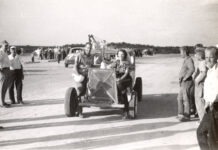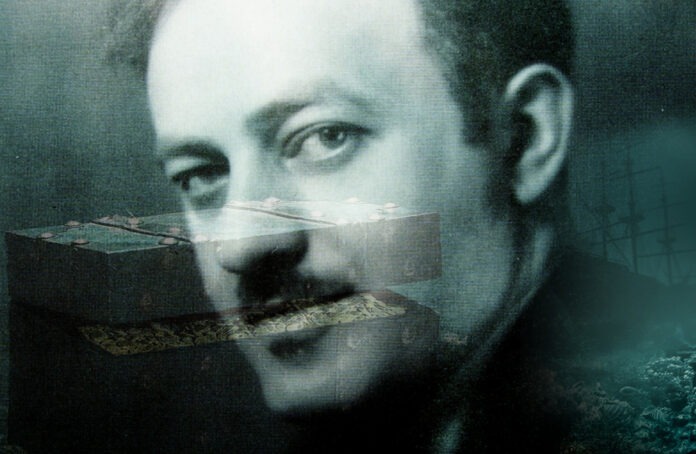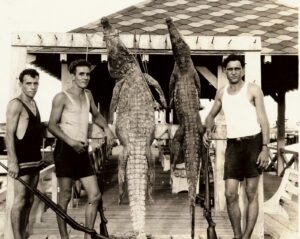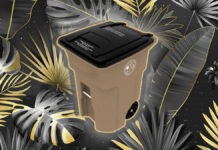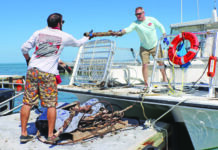J.P. McEvoy was an American writer, novelist and cartoonist. He was born on Jan. 10, 1897, in New York City. One of the movies based on his work was called “The Potters.”
Released on Jan. 15, 1927, it starred W.C. Fields. The movie’s tagline was, “Right out of the funny papers and twice as funny!”
On Jan. 7, 1926, the San Francisco Examiner ran McEvoy’s “The Potters” comic strip. What was interesting about this particular comic was that McEvoy wrote about pirate treasure and Key Largo.
Bill: Well, to tell you the truth, there is something exciting down here just now and you’re just in time to get in on it.
Red: Remember, no real estate.
Bill: No, this isn’t real estate. It’s more exciting than that.
Mamie: Oh tell me, what is it, quick!
Bill: Buried treasure. Pirate gold.
Red: Go on!
Bill: Absolutely. Do you know that for the last three days I haven’t been able to get a boat to take me out to my lots, that every available craft with a bottom in it has been going up and down the Florida Keys for the last week full of treasure hunters, and right now there’s a key about forty miles from here – a place called Key Largo – that is said to be one of the historical caches of the pirates who roved the Spanish Main.
The focus of the comic was, in fact, real estate, and it was no accident that the New York humorist, novelist and cartoonist wrote about buried treasure on Key Largo. He was trying to drive up interest on cooling property sales during the Florida Land Boom. McEvoy was not working alone but with a fellow writer and friend, Ben Hecht.
Hecht was an American playwright, journalist, novelist and Oscar-winning screenwriter who worked on the script for “Gone With The Wind” (he is uncredited), among other movies. In 1925, Hecht and McEvoy visited Miami. They were introduced to Charles Ort, then president of the Key Largo Corporation representing the lots for sale in the yet-to-be-developed Key Largo City.
Hecht and McEvoy were invited to a meeting with the corporation’s directors. There, Hecht presented an idea to stir interest in the Key Largo properties, and the room ate his story up. As a result, he was hired to contrive a story about pirate treasure buried in Key Largo. However, his first idea was flawed.
The first plan was to charter a yacht in New York City and lure 50 “society women” to the Keys with the promise of a treasure hunt for pirate gold. New York’s society ladies would come to Key Largo to “discover” planted treasure, go home and spread the word of their exciting fortune. The working theory was that once the news began to spread, people would flock to Key Largo to buy their potential lottery ticket.
For his efforts, Hecht was paid $5,000 a week for a 12-week period. In addition, the Key Largo Corporation would pay for his expenses and the fees associated with renting the yacht and bringing it to Key Largo. The problem was that Hecht and McEvoy, his partner, were unable to convince any ladies to join the treasure hunt so Hecht rewrote the “discovery” scenario.
According to the stories told about the scheme, Hecht contacted Cuba’s president and asked if he could borrow a few gold coins. Which president is unclear as there were two presidents in 1925. If Hecht made his request before May 20, it would have been Alfredo Zayas y Alfonso (1921-1925). Gerardo Machado (1925-1933) assumed office on May 20, 1925.
Whoever was in office was amenable and loaned Hecht a few Spanish coins from the old days when the Spanish treasure fleets sailed between Cuba and Spain. Hecht placed the coins inside some Spanish vases and buried them on Key Largo. Then, an island local was said to have been paid $100 to “discover” the buried treasure and tell his story to the press and public.
According to a story about real estate fraud published in the Nov. 29, 1953 edition of the Tampa Bay Times, “The two crocks of doubloons had been dug up by a fisherman named Captain Chester, and Hecht then spent a week helping the captain find adequate words to describe his discovery to newspaper reporters.”
The same newspaper story stated that the Pulitzer Prize-winning reporter Herbert Bayard Swopes of the New York World sent Hecht a telegram. Swopes informed Hecht that he wanted to rush down to cover the story only if Hecht guaranteed it was legitimate. The telegram was apparently ignored. It did not stop other reporters from venturing to Florida to get a scoop on the story. When they did, Hecht teased them with the Spanish coins on loan from the Cuban government.
Hecht told a slightly different story than the one written about in the Tampa Bay Times. In the story he crafted, the man who discovered $250,000 in Spanish treasure buried in 25 giant Spanish vases was a deputy sheriff named Bill Lofton — who appears to have been a figment of Hecht’s imagination, too.
The story was printed in as many as 200 newspapers nationwide, including the Omaha Daily News on Dec. 19, 1925. The headline read: “25-Year Hunt Yields Buried Treasure – Weatherbeaten Mariner Unearths Cache of Dublooms and Pieces of Eight Near Key Largo, Florida.”
Hecht and McEvoy read the writing on the wall and separated themselves from the project when the land boom began to implode. The Key Largo Corporation was not as fortunate.















